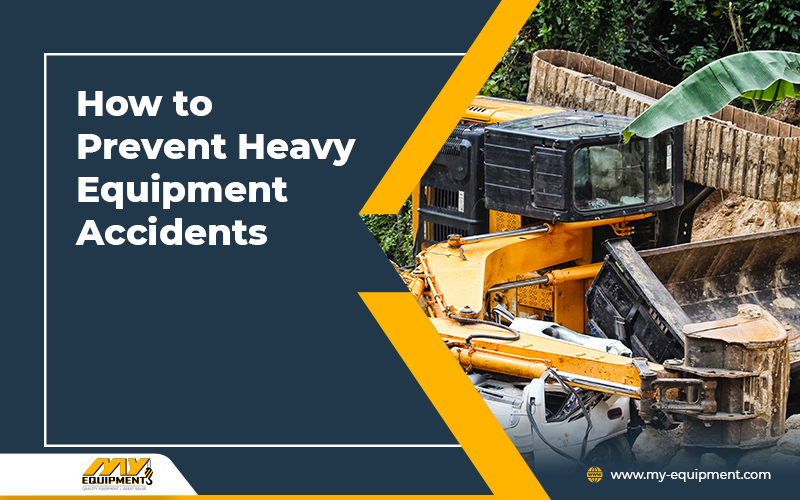For anyone in the construction industry, it is common to rely on heavy equipment like bulldozers, excavators, and motor graders to finish a project. Completing a project necessitates the use of heavy equipment, but these machines also present a lot of risk of worksite accidents. If heavy machinery is not handled correctly, it can have dire consequences like financial loss or even loss of life. Sometimes even the most safety conscious contractors end up experiencing mishaps on a jobsite. Your company can adopt certain practices to reduce the likelihood of any such incidents at your worksite.
Conduct a Pre-Operation Walkaround
If your equipment has faulty parts, it will not just affect its performance but will also be a safety hazard for anyone working with or around the equipment. Make sure to perform a daily walkaround. Look for any potential issues with the equipment before your shift begins.
Check the tires to make sure they are not underinflated or worn out and that the cab windows are clean and do not have any cracks. If your equipment has tracks, check them for any damage or to see if there are any rocks stuck in the mechanisms. Remember to check the inside of the cab as well to make sure that all the controls and instruments are working properly. If in your pre-operation walkaround you notice any issues, report them immediately to your supervisor or get in touch with someone to request service.
3 Points of Contact
A large portion of construction site deaths can be attributed to falls. There are a lot of fall hazards present on a construction worksite, especially if you are mounting or dismounting heavy machinery in dangerous circumstances. One way to reduce the risk of falling is by following the three points of contact rule. Whenever you are entering or exiting your cat heavy equipment, be sure to always maintain contact with a solid surface or step with two feet and a hand or with a foot and two hands.
Do Not Overload the Machine
There is a specific load limit for every piece of equipment, and as an operator, you should make sure to stay within it. If you try to operate an overloaded piece of equipment, it will likely tip and roll. Overloading can also break the hauling component or cause a load drop. All these things can result in an accident.
Be sure to check the weight limit of your equipment before loading and do not ever exceed it. Even if you are running on a tight schedule, stay within the load limit and avoid overloading. Making an extra trip is better than causing an accident and delaying your job even more.
Be Alert
When you are operating heavy equipment, you need to maintain your focus for a long period of time, and that requires stamina. If operators are not well rested and get tired, their concentration can waver, resulting in mistakes and accidents. Make sure to take frequent breaks throughout your shift to minimize fatigue and stay alert while you are on the job.
Also, ensure that you are eating and drinking enough to stay fresh throughout your shift. If you know that you are going to be operating heavy equipment the next day, be sure to get a proper night’s sleep. Construction worksites are dangerous enough without tired workers operating heavy machinery.


 1400 Broadfield Blvd, Houston, TX 77084,
USA.
1400 Broadfield Blvd, Houston, TX 77084,
USA.